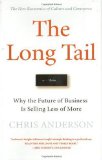Sarah Palin – Media Training 101!
Oh my gosh. While I’ve voted mainly Democrat, this post isn’t about the politics of the election. Rather, did you SEE and HEAR those interviews with Katie Couric and Charles Gibson.
Considering that Palin has been out of the public since being announced as the VP pick, I assumed that she’s been undergoing intense media training. There is a huge interest in her that her initial interviews will be a pivotal point in her candidacy. Each response will be reviewed and dissected heavily.
In reviewing the interviews on YouTube, I wonder if her media trainers underestimated the level and depth of questions that she was going to be asked. From her general background and political record to energy and foreign policy, it seemed that Palin was only able to give canned responses.
Now don’t get me wrong. One aspect of media training is how to handle tough questions, respond yet smoothly transition to the message that you want to communicate. Bill Clinton was the maestro at this. Very smooth. Very articulate. And was able to shift the conversation.
The Palin interviews demonstrated her weaknesses
– She responded with canned messages to EVERY question
– She allowed herself to be cornered on questions which led to
– Her answering questions she shouldn’t had
– She was visibly uncomfortable with the speed and style of questions
What’s the net net?
For a woman with so much charisma, it’s confusing that she is unable to match that charisma as a public speaker and interviewee. Eventually, charisma will only take her so far unless she can back it up with substance. It will be interesting to see what progress is made before the VP debates on Friday Thursday.
If I were on her team, the points I would work with her on are:
Visible presence: when Sarah is easy going and relaxed, she can be persuasive with her viewpoint. She will need to keep this cool when pushed for details and better understanding of her views beyond “high-level” sound bites
Bridging Responses: bridging is how to take a question and smoothly transition it to the topic you want to discuss. Again, Clinton was great at this. For example, when asked about foreign policy, a bridge would be:
– addressing the question: “Foreign policy impacts our country”
– the bridge: “as we’ve seen this become intertwined with”
– move to your topic: “our energy and security policies. As the governer of Alaska”
– and respond: “we understand how to protect our energy supplies” blah blah blah
Prepare, prepare, prepare: In the end, it comes down to preparation. Palin’s team NEEDS to ANTICIPATE all questions. They can’t assume that charisma and surpise at her nomination will carry to the end. This requires intense preparation and on-camera rehearsal. Most importantly, they need to replicate the Gibson and Couric interviews. Get her comfortable with uncomfortable situations and questions.
Conclusions
Overall, Palin needs to overcome her weaknesses before her debate with Biden. The country is watching her and this will be a critical point not only in her public career, but also the direction of the campaign. If she can harness the charisma while competently communicating her experiences, the election will only become more interesting.
What do you think?
All content copyright Cece Salomon-Lee, Creative Commons Attribution-Noncommercial-Share Alike 3.0 Unported, with the attribution: By Cece Salomon-Lee, PR Meets Marketing, and a link to the post.
Keeping Blog Motivation
Starting a blog is easy. Getting and maintaining the motivation to post regularly is not. I originally started my blog in May 2007 as a way to discuss how PR is an integral part of marketing.
I started writing one post a week, grew to two posts and then even did a weekly digest of interesting articles. As time passed, my posting became more irregular while work increased as well as the activities of life. On top of that, I’ve been struggling with what to write.
I thought – I want to be original. If someone else wrote on a topic, why repeat it – I would just link to the post and put in my 2 cents as part of a weekly digest. I was amazed at the number of intelligent folks around me – Jason Falls, CK, Cam Beck, Chris Brogan, Todd Defren, Paul Dunay and more!
What could I possibly contribute? Not writing for the past few weeks has allowed me to reflect and realize why I started blogging in the first place. The purpose of blogging is PERSONAL!
It’s not about how often I post. It’s about writing something of VALUE to me and, in the process, this will help someone else.
It’s not about writing what motivates others, it’s about writing about what MOTIVATES me. And maybe, this will motivate someone.
It’s not about creating my own community. It’s about how my blog can CONTRIBUTE to the larger community
My blogging commitment to ME and YOU
So what does this mean? For me, my goal is to write posts that highlight what I’ve learned. To share any new insights that I have. And in the process, get to know about you while revealing more about me.
As part of this process, I’m finally going to update my blog theme, so bear with me as I may make changes. Playing with different themes or maybe soliciting help for a more customized look.
While I can’t promise to post often, I can promise that I will try to make my posts more personal. That they are of value to me, motivate me and contribute to the community.
So – what do you think?
Brave New World of Media Pitching: Facebook
I have only been on a Facebook for a year or so. I mainly use it to keep in touch with personal connections, and rarely use it for professional reasons. I believe that the “casual” aspect of Facebook does make it more difficult for business-to-business companies to leverage the full potential, with early success for consumer related companies.
With that said, I do see the potential of Facebook from a PR perspective:
Fan Club or Group?: Before setting up a group, you have the option of designating it as a group or fan club. Groups have membership limits while fans clubs don’t. It’s a small distinction but quite important depending on the size of the community you’re seeking to tap into.
Before setting up a fan club/group, consider these two points first:
1) Research what groups/clubs already exist in your area. Does it make sense to set up another page if there are hundreds of similar ones out there?
2) Participate in existing groups/clubs to network with people in your target audience. By “friending” these folks, you’re able to pull in your existing network if you do decide to launch your own group or fan club.
Share and Share Alike: With Facebook’s “share” function, you can provide a steady stream of company updates and information to your friend network. For example, my company recently received media coverage in Forbes and San Jose Mercury News. I shared this news to my connections.
I recommend sharing information that is relevant to your industry. Since you can add a comment, this helps to position your company as an expert on a specific topic. And is much quicker than drafting a blog post from scratch =)
In the end, you never know what information will catch a reporter/blogger’s eye for a possible article or posting.
Friending Reporters and Bloggers: If a reporter or blogger has agreed to be friends with you, the implication is that you’ve created or have an existing personal relationship. Depending on your level of “friendship,” you can send pitches via Facebook’s internal email system, which may break through the noise of emails. Just confirm that the person prefers to receive pitches this way. He or she may want to keep Facebook on a personal level while want “business” correspondence to be received in another format.
While I have not personally done this yet, I would just recommend being very careful of how and when you do this. As I wrote recently about HARO spam, the purpose of these tools is to create connections, not harvest emails and contact information. By doing so breaks the trust you’ve created.
Promote Events: Facebook enables people to send out event invitations to your friends. Great way to promote attendance for live events or webinars. Be sure not to over promote an event with multiple reminders.
Applications: As an open platform, Facebook offers different types of applications. These applications range from the silly – sending a beer – to useful – free VoIP phone calls or Twitter updates. For me, I’ve added the Twitter app to tie all my external personalities into Facebook. Determine which apps to incorporate based on the types of information your generating and which are appropriate for your company.
Some have even created complimentary applications within Facebook which have become wildly popular. As long as it’s relevant to your Facebook audience, is easy to use and understand and is relevant to your business, apps can be one way to get your business to your target audience.
Face Book Case Study:
I was seeking B2B examples of using Facebook and couldn’t find any Mike Nierengarten of (company?) did forward me this description of how they leveraged Facebook to drive students to an online animation school (http://www.facebook.com/pages/Animation-Mentor-Online-Animation-School/14719464771):
Animation Mentor, an online animation school, is perfect for Facebook because it has tons of great content (video, events, pictures), a strong (current) student presence on the site, and our target customers (potential students) use the site regularly.
For Animation Mentor, we set up a profile to connect with current students. From there, we added a Facebook page and rolled those students into fans. We then created a Prospective Animation Mentor Student group for individuals who were interested in the school to connect and share thoughts. Finally, we promoted the page off of Facebook using an Animation blog.
Results: Facebook page ranks for targeted keywords on Google (e.g. #23 for “animation school”, #9 for “character animation”), we have over 700 fans with a mix of currents students and interested students interacting online, and we have an area for prospective students to address their concerns and interact directly with someone from the school in their space. We have also seen a near 3% conversion rate (i.e. complete an application) from the Facebook page.
Summary: Twitter, LinkedIn and Facebook
I posted my question on Twitter and LinkedIn. I decided not to ask my Facebook network as my previous questions have received no answers. I overwhelmingly received more responses via LinkedIn. Why?
Twitter seems to elicit a lot of responses depending on the interest of your audience to that question and what other conversations are happening at the time. With the cacophony of voices, it’s very difficult, at least for me, to pose a question that elicits response. I did when I discussed the role of PR agencies but not for this question.
For LinkedIn, people are leveraging it as a business networking tool. The Q&A section is a great way to demonstrate your expertise in a specific topic, as I outlined in my previous post.
I think Lewis Green of BizSolutionsPlus said it best in his response: “I think LinkedIn and Plaxo Pulse are better social networking sites for non-invasive marketing and PR, which is the only way we should be promoting our brands within the social networking and social media worlds. We should be giving, not making an effort to get. That’s why providing free information, such as this Q&A offers us a chance to do so.”
Initial Conclusions
1) LinkedIn great for professional networking and developing expertise with LinkedIn Answers
2) Twitter great for quick updates and breaking information to your company
3) Facebook is like a mini-site that has a social networking component. You need a wealth of relevant information to feed into the pages, while actively working to develop and maintain a community.
Other posts in the “Brave New World of Media Pitching” series:
– Brave New World of Media Pitching: LinkedIn
– Brave New World of Media Pitching: Twitter
– Read LinkedIn responses to “How do you use Facebook for PR?”
UPDATE: Forgot to thank everyone who responded: Mike Nierengarten, Lewis Green, G. Niki Foust, Andrew Miller, Thomas Ahonen, Joyce Schwarz, Jocelyn Brandeis, Alysha Cryer, Dylan Conroy
All content copyright Cece Salomon-Lee, Creative Commons Attribution-Noncommercial-Share Alike 3.0 Unported, with the attribution: By Cece Salomon-Lee, PR Meets Marketing, and a link to the post.
Haro and PR Spam
Help A Report Out (or Haro).com is a free version of Profnet. Started by Peter Shankman, this great service is growing greatly based on word of mouth. Frankly, if it’s free and a way to pitch stories to journalists, us PR folks are on it faster than flies on shit.
So it saddened me when I saw this in a recent Haro newsletter:
This morning, I got a pitch (as did MANY of my key journalists on HARO) about the rumor that Matthew Broderick cheated on Sarah Jessica Parker, and offering me a celebrity life coach to talk about it. Within five minutes, I got emails from about 10 journalists, all asking why got the same email, as well. See, most journalists on HARO use specific HARO addresses. So they know where the pitch was coming from. Totally off-topic, totally inappropriate, totally unacceptable.
Alas, Nancy Mure, Chris Burres, and the rest of WOW Media will no longer be allowed on the HARO list. I won’t sit here and let reporters get totally off topic pitches from publicists who simply don’t get it, or worse, don’t care. I don’t care that other lists don’t care that you spam journalists. This is MY list. Don’t like it? See ya.
Please folks, let’s not kill a good thing by using this fabulous service to harvest emails. Granted, there are too many people who consider them “public relations professionals” because all it requires is an email address and the ability to type. I’m glad that Peter swiftly took them off his list. Hopefully this deters other folks from doing it, but why do I think this won’t be the first or last instance of this.
Sigh, maybe I can wish?
Related post:
PR Spam: Ten Points for Thought
Brave New World of Media Pitching: LinkedIn
In late April, I wanted to start exploring different ways that we can now pitch media. Besides my page about how to pitch bloggers, I looked into the new way of pitching via Twitter in my post titled,”Brave New World of Media Pitching: Twitter.”
Social networking is a new avenue for public relations professionals. From my perspective, LinkedIn has some interesting opportunities. Here’s my look at LinkedIn in the brave new world of media pitching:
Make Connections: LinkedIn’s core purpose is to make connections – either with people you know or people you want to know. If you’re seeking to connect with a journalist, you can request a “linkedin” connection to make an introduction. Rather than send a blind pitch to a reporter, what’s better than a friend making the pitch on your behalf?
Research Media: I was recently searching for a reporter to create a briefing sheet and found the reporter’s LinkedIn page. Doh! I can’t believe I didn’t consider this in the past. LinkedIn is rich with information about a person’s background. Leverage LinkedIn to research reporters – where did they work in the past, titles, and other pertinent information. This provides incredible insight before you pitch the reporter as well as to prep your spokespeople.
LinkedIn Answers: LinkedIn Answers provides an opportunty for PR to participate in or start a conversation on relevant topics. Certain topics can also show up high on a Google search, which helps if a reporter is searching on a specific topic. In the end, you never know how a reporter gets her inspiration for a story and if she needs sources.
What other ways are you using LinkedIn for media outreach?
UPDATE: Just saw this post by Lewis Green of BizSolutionsPlus regarding value of LinkedIn.
Other posts in the “Brave New World of Media Pitching” series:
Brave New World of Media Pitching: Twitter
technorati tags: LinkedIn Media Pitching PR Public Relations marketing media relations
del.icio.us tags: LinkedIn Media Pitching PR Public Relations marketing media relations
icerocket tags: LinkedIn Media Pitching PR Public Relations marketing media relations
All content copyright Cece Salomon-Lee, Creative Commons Attribution-Noncommercial-Share Alike 3.0 Unported, with the attribution: By Cece Salomon-Lee, PR Meets Marketing, and a link to the post.
Are You Ready for Virtual Trade Shows?
Disclosure: My company just introduced a new solution today that is in the virtual trade show market. I decided to take this occasion to write a larger post about the virtual events/tradeshows market. Please note, the opinions expressed in this post are my own and not a reflection of my company’s.
With that disclosure out of the way =) , virtual trade show/event is something that is just starting to be used by organizations. Just think about it, you don’t have to travel across the country to attend a show, set up the booth at the show, and stand for hours waiting for people to come by your booth. And hopefully, at the end of the show, you have quality sales leads, connected with possible business partners, or even run into key media in your industry.
With an online version, the thought is that organizations will minimize tangible (i.e. travel, hotel, food, materials) and intangible costs (i.e. environmental and productivity), while providing all the benefits – if not more. You can still connect with people through online chats or emails, get the materials you want, and attend keynotes and presentations. From a marketer’s perspective, hopefully you spend less money with better results. And you don’t have to break down the booth either!
I recently read some stats in a report by FactPoint Group that stated that virtual events/shows can attract an average of of 1500+ people, who spend about 2+ hours in the show. When you look at this information, this provides a compelling reason for organizations to consider online conferences.
What do you think? Would a virtual event appeal to you as a marketer or participant? Why or why not?
All content copyright Cece Salomon-Lee, Creative Commons Attribution-Noncommercial-Share Alike 3.0 Unported, with the attribution: By Cece Salomon-Lee, PR Meets Marketing, and a link to the post.
Grade Your Press Release
HubSpot just announced the availability of PressRelease Grader. Based on the company’s Website Grader, the idea is to help companies optimize their releases for SEO purposes. I think PressRelease Grader will be a good tool for marketers and public relations professionals seeking to optimize releases for SEO purposes.
You just cut and paste the content of your release and it evaluates it on several points: general statistics, suggestions for content, and link analysis. There’s also a word cloud highlighting which words are used most in the release.
Things I like about the application:
– Education level of the release: Depending on the audience for the release, you have to write the release accordingly. Looks like my releases are graduate level. Thankfully I’m not a consumer facing company otherwise, this would be an issue.
– Gobbledygook Words: Based on David Meerman Scott’s book, this tells if you if you’re overusing certain words. Unfortunately scalable and robust are words that I constantly use in press releases!
– Link Analysis: This portion analyzes the words and links in your release. It provides recommendations to make the links stronger for SEO.
Recommendations for the release grade:
– Glossary of terms: I recommend hyperlinking industry terms and pointing to a glossary or definition. Though I’m not new to SEO per se, there are some terms that I may not use on a daily basis.
– URL to press release: I recognize that the tool is great for unpublished press releases. I would be interested in seeing an ability to put in an URL for a published release. This way, you can analyze additional points for the release, such as are the keywords, title and description consistent with the release.
I look forward to seeing how the Press Release Grader improves with feedback from fellow PR folks out there.
All content copyright Cece Salomon-Lee, Creative Commons Attribution-Noncommercial-Share Alike 3.0 Unported, with the attribution: By Cece Salomon-Lee, PR Meets Marketing, and a link to the post.
About
Favorite Service
Recent Comments
- on Going Virtual Isn’t Necessarily the Answer to Replacing Your Physical Events
- on Going Virtual Isn’t Necessarily the Answer to Replacing Your Physical Events
- on Going Virtual Isn’t Necessarily the Answer to Replacing Your Physical Events
- on Going Virtual Isn’t Necessarily the Answer to Replacing Your Physical Events
- on Going Virtual Isn’t Necessarily the Answer to Replacing Your Physical Events
Ads by Google
Favorite Books
Marketing Blogs
PR Blogs
- KD Paine's Measurement Blog
- Micro Persuasion
Virtual Events & Meetings Blogs
- Cisco Virtual Environments
- It's All Virtual
- The Webinar Blog
- Virtual Edge Institute

 Follow
Follow Cece Salomon-Lee is director of product marketing for Lanyon Solutions, Inc. and author of PR Meets Marketing, which explores the intersection of public relations, marketing, and social media.
Cece Salomon-Lee is director of product marketing for Lanyon Solutions, Inc. and author of PR Meets Marketing, which explores the intersection of public relations, marketing, and social media. 


